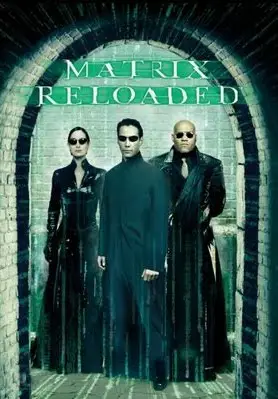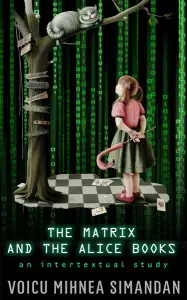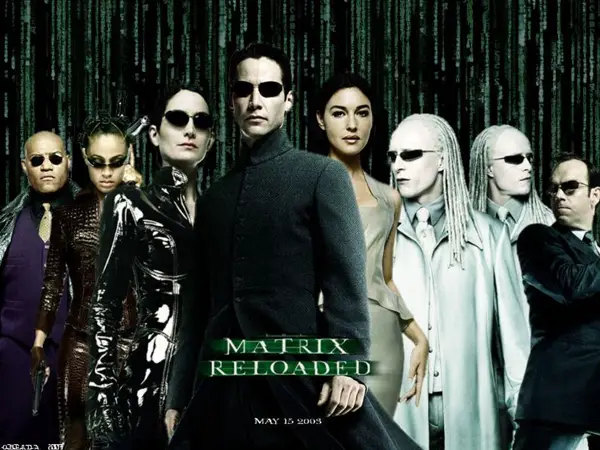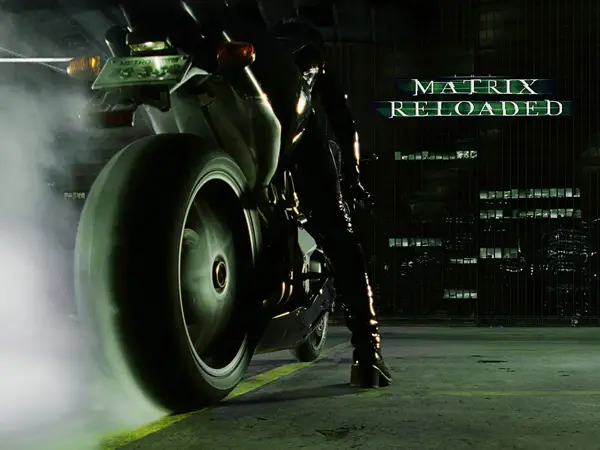 Exactly ten years ago, on May 7, 2003, the second installment in the Matrix trilogy, The Matrix Reloaded, premiered in California, in the United States. Just like its prequel, The Matrix, the film was written and directed by the Wachowski Brothers but, unlike its widely-praised predecessor, received mixed reviews. Still, some fans on thematrix101.com believe that, “dense with ideas and unexpected twists, Reloaded was bigger, stronger, faster, and far sexier than the first movie had been.”
Exactly ten years ago, on May 7, 2003, the second installment in the Matrix trilogy, The Matrix Reloaded, premiered in California, in the United States. Just like its prequel, The Matrix, the film was written and directed by the Wachowski Brothers but, unlike its widely-praised predecessor, received mixed reviews. Still, some fans on thematrix101.com believe that, “dense with ideas and unexpected twists, Reloaded was bigger, stronger, faster, and far sexier than the first movie had been.”
Writing for CinemaBlend.com, Joshua Tyler is of the opinion that, “Visually, Reloaded is a stunning film, with a perfect blending of models and nearly seamless cgi amidst beautiful production design.” He concludes that “Reloaded is a joyous pile of Kung Fu techno magic in its own right, a blessed rapture of mind and sight.”
Peter Bradshaw maintains in his movie review published in The Guardian (May 23, 2003) that The Matrix Reloaded “is a film that will have red-blooded cinemagoers pantingly clambering off the ride at the end and staggering over to the queue for tickets to get straight back on again.”
The plot of The Matrix Reloaded picks up about six months after the events that concluded the first part of the trilogy. The machines are no longer able to tolerate the actions of the freed humans and send an army of sentinels to destroy Zion, the command center of the real world. In the meantime, Neo is waiting for a message from the Oracle for whom he has a few questions.
When the meeting finally takes place, Neo learns that he will have to reach the Source and, in the meantime, sacrifice Trinity’s life. But to reach the Source, Neo’s team first has to find the Keymaker who is being held captive by the Merovingian. After his brief meeting with the Oracle, Neo is almost killed by Agent Smith (and his clones), who has managed to copy himself onto other agents of the system and the people in the Matrix.
When the Merovingian refuses to release the Keymaker, Morpheus, Trinity and Neo are helped by Persephone, the Merovingian’s wife, who betrays her husband and leads the three to the place where the Keymaker is held prisoner. A battle then ensues between the Merovingian’s men and Neo, on one side, and between Trinity and Morpheus and the Twins, on the other.
All three defeat their enemies and, together with the crew of two other ships, the Vigilant and the Logos, Morpheus draws up a plan to reach the Source. When Neo finally reaches the Source he is “welcomed” by the Architect who seems to have been expecting him. The Architect explains to Neo that he is part of the design of the Matrix and that he needs to return to the Source to select survivors for the repopulation of Zion which will for sure be destroyed by the sentinels. By doing this, he will save the entire humankind who is still connected into the Matrix but he will have to accept Zion’s defeat and, most importantly, let Trinity die.
Of course, this is something Neo can’t accept so he storms off to save Trinity who, against Neo’s wishes, has entered the Matrix to complete the Vigilant’s mission whose crew was destroyed by a sentinel attack. Unfortunately, she runs into two agents who shoot her dead. Using the powers of the One, Neo brings Trinity back to life and they both return to the Nebuchadnezzar where Morpheus and Link, the ship’s operator, await them.
The Nebuchadnezzar is then attacked and destroyed by sentinels but the four crew manage to escape are immediately hunted down by sentinels. In an amazing show of power, which now extends to the real world and not only to that of the Matrix, Neo is able to stop the Sentinels by using only his thoughts. He subsequently falls into a coma from the effort.
The second installment in the Matrix trilogy ends with the Hammer rescuing the four and setting up the stage for The Matrix Revolutions. Commander Lock’s counterattack failed when Bane, whose body had been taken over by one of Agent Smith’s clones, activates an EMP too early, thus frying all the circuits on the attacking force’s hovercrafts and exposing them to the sentinels. Both Neo and Bane, the only survivor of the counterattack, lie in the medical dock of the Hammer.
Philip French believes that “The movie with its state-of-the-art (or state-of-the-craft) special effects obviously appeals to a youthful audience looking for a cult object that combines spiritual uplift and the sort of thrills provided by destructive video games.” (The Observer, May 25, 2003) And it is true that for may years following the complete release of the trilogy, the internet was full of websites, chat rooms, forums, and blogs debating and dissecting the meaning of the movie. “Judging by the internet chatter,” writes Akin Ojumu in The Observer (May 18, 2003), “it has attracted plenty of in-depth amateur criticism and sent students scurrying back to their philosophy texts with fresh enthusiasm.”
Very few sites dedicated to The Matrix trilogy are still active while the official Warner Bros. website (whatisthematrix.com) is also gone. The most important online source of information remaining is thematrix101.com, a professionally run and designed fan-based virtual portal. Still, the movie remains a blockbuster that “has had a significant cultural impact” (Akin Ojumu).
The Matrix Reloaded went on to win four awards and was nominated for nineteen other. The four winning categories were BMI Film Music Award (BMI Film & TW Awards), Choice Movie – Drama/Action Adventure (Teen Choice Awards), Best Single Visual Effect of the Year in Any Medium (Visual Effects Society Awards) and Best Overall Stunt by a Stunt Woman (World Stunt Awards). The list of the awards won suggests that The Matrix Reloaded continued with the innovative tradition the Wachowski Brothers started with in The Matrix, thus providing viewers with an engaging movie experience.
As Peter Bradshaw put it in his review, “The Matrix Reloaded delivers in skipfuls what its fans want: superbly stylish and distinctive martial-arts sequences from choreographer Yuen Woo-Ping and visual effects designer John Gaeta, mind-bending contrived in various freaked-out combinations of post-apocalyptic urban locations.” In a comprehensive look at the special effects employed in The Matrix Reloaded, Steve Silberman wrote for Wired.com (Issue 11.05, May 2003) that with its “nail-biting climax” and “dark richly nuanced aesthetics,” the second installment in the Matrix trilogy “became the most successful movie in the history of Warner Bros.”
Of course, not everyone enjoyed the second installment in the Matrix trilogy, with some critics even believing that the Wachowski brothers should have not taken the Matrix universe any further. For example, Steven Poole from Edge feels that the fans were let down: “In Reloaded, Niobe and her crew go to blow up the nuclear power plant, a feat of security bypassing which would presumably require something like a lobby scene square. Instead, we see nothing until they are already in the control room. Why?”
Still, ten years later after its release, The Matrix Reloaded remains, together with the other two installments in the trilogy, one of the best sci-fi action films of all time.
 My intertextual study The Matrix and the Alice Books looks at the way Lewis Carroll’s Alice’s Adventures in Wonderland and Through the Looking-Glass have influenced some of the ideas put forth by Andy and Larry Wachowski. The book is now available as a Kindle ebook too.
My intertextual study The Matrix and the Alice Books looks at the way Lewis Carroll’s Alice’s Adventures in Wonderland and Through the Looking-Glass have influenced some of the ideas put forth by Andy and Larry Wachowski. The book is now available as a Kindle ebook too.



